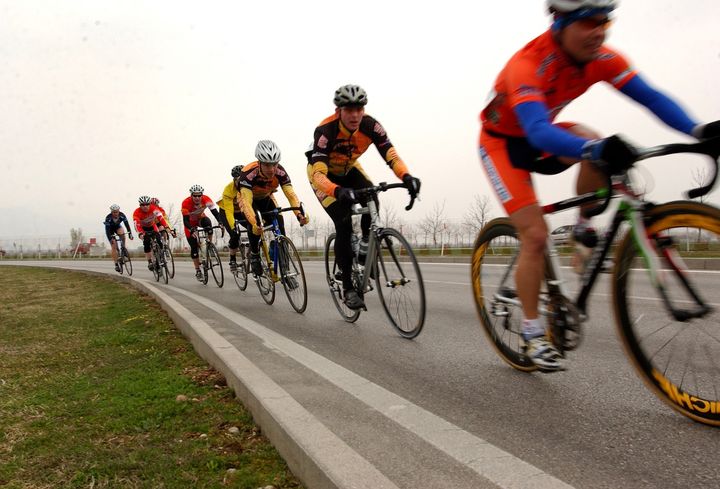
On a bicycle, especially if you're a road bicycler, you have no option but to drive defensively. A typical road is not designed very well for cyclists. There are potholes. There are narrow shoulders. The sightlines and intersections tend to be terrible, especially if there are hills to navigate at the same time.
And that's all without thinking about drivers. It seems that cars have one of two attitudes when it comes to cyclists. Either they give plenty of room, or they nonchalantly plough along in their lanes without thinking about who else is out there. Aggressive driving from behind, and people who carelessly open doors in front, are some of the nightmares for cyclists.
Can technology answer this problem? Perhaps in part it can. Garmin (which is best known for making GPS systems) has just introduced a new device for cyclists who are needing some help looking behind them.
"Helping create a safer cycling environment, Varia rearview bike radar warns cyclists of vehicles approaching from behind up to 140 meters (153 yards) and also warns approaching vehicles of a cyclist ahead," Garmin wrote in a press release, "and Varia smart bike lights automatically adjust to changing conditions as well as the speed of the cyclist."
The company says it's needed because on average (citing U.S. Department of Transportation statistics), 726 cyclists die and 49,000 are hurt when they and a car suddenly intersect. And in 40% of these cases, the cyclist is caught unawares when they are smacked behind. The system also includes extra bike lights to make other drivers on the road aware of the cyclists.
Garmin claims it's the first such system in the world, but everyone will have to wait a few months before it's expected to hit the roads; while the company is advertising it now, shipping doesn't start until the third quarter. This means that really the reviews of it are only from gadget-y publications at the moment, who can only talk about what Garmin advertises. That said, Engadget praised the commercial above: " 'The threat is real,' people," it wrote.

While most of us aren't cycling in such tight quarters, it's good to know there are systems out there to counteract car crowding. Credit: Wikimedia Commons
Is it enough to counteract the threat? The tool certainly alerts cyclists and people around them about the cyclists themselves, but in many cases it is likely up to the cyclist to take action. An oblivious driver will likely still be oblivious if they see a cyclist ahead; an inexperienced one may not know what to do, or how much space is appropriate.
This means that no matter what technology solution is on board, probably the best prevention is training. Driver education programs should by default include a section on sharing the road with cyclists. And cyclists should, if at all possible, invest in materials of their own to better understand how to navigate two-lane highways and city blocks. If they're willing to shell out a few hundred dollars for a fancy system, surely a few hundred dollars in training would also be of use.
Do you have an idea for how to make cycling safer? Share it with us by launching a HeroX challenge.
Top image: One challenge with biking is it's hard to look behind you. Credit: Wikimedia Commons








